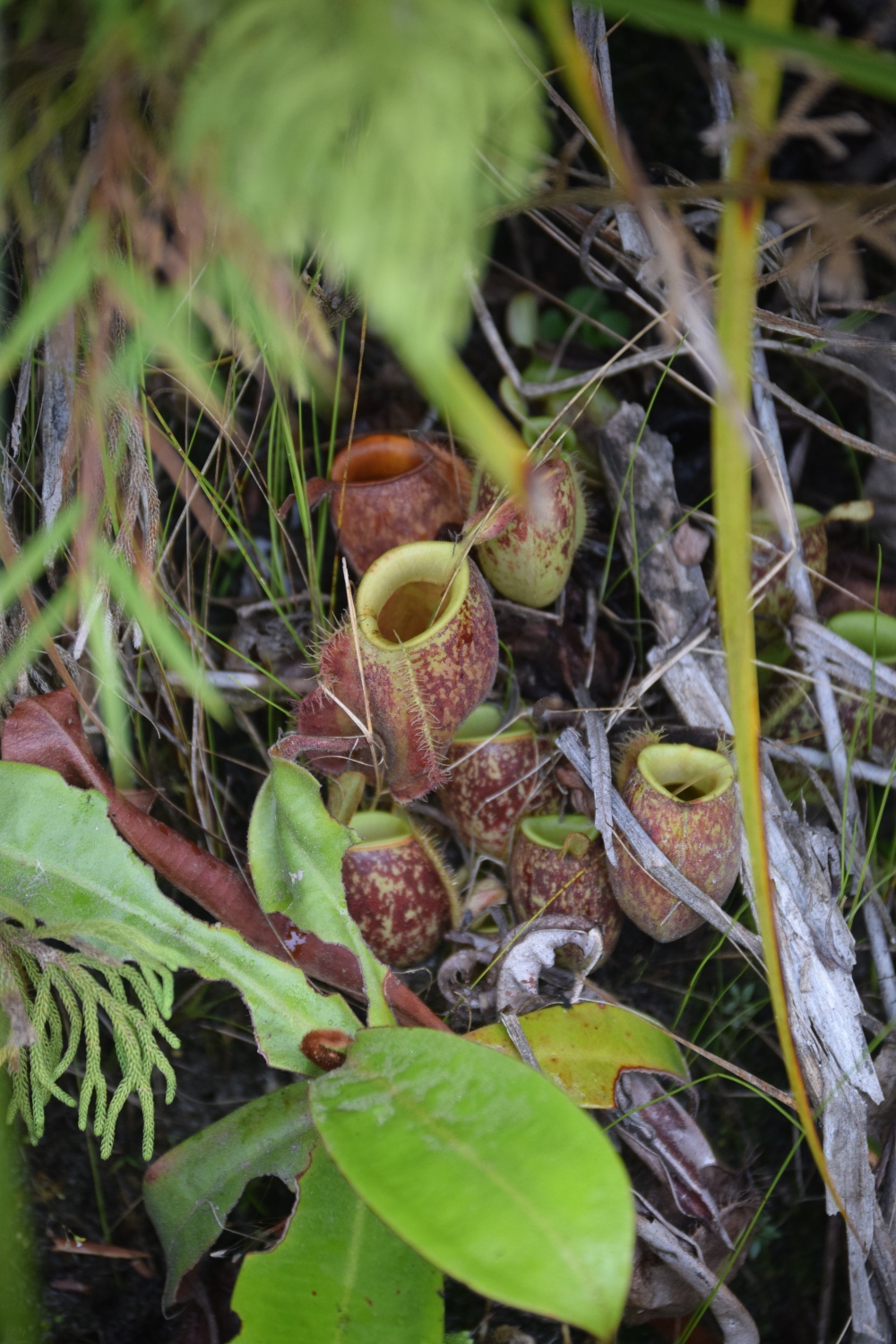Species in Focus is a series of short posts about interesting species I’ve seen with tips on identification and where you can also see them. Today’s Species in focus is a fascinating tropical pitcher plant from South East Asia.
Description: Nepenthes ampullaria like many plant species doesn’t really have a common name, although in Pitcher Plants of Borneo (an excellent book) by Anthea Phillips and Anthony Lamb it was given the vernacular name Flask-shaped Pitcher Plant. This name describes it very well as the plant forms clusters of squat, flask-shaped pitchers that sit on the forest floor. Nepenthes ampullaria also produces upper pitchers which are are smaller and form higher up on the plant which can climb to over 20m.

Tropical pitcher plants produce globe or tube shaped traps on the end of tendrils that extend from the midrib of the leaves. The traps contain a watery fluid that traps, kills and then digests food that falls into it. Most Nepenthes feed on insects, which are attracted to the trap by nectar glads on the underside of the trap lid (operculum). The lip to the trap (peristome) is incredibly slippery, causing insects to fall into the trap and to their deaths. At least one species (Nepenthes lowii) feeds on the poo of mammals. It secretes a sweet nectar from its operculum which also acts as a laxative for tree shrews.
Nepenthes ampullaria however has evolved away from carnivory and feeds on plant detritus. Instead of partially covering the trap, its operculum is folded backwards so that the mouth of the trap is completely open. As it sits on the forest floor this allows falling leaf litter to land in the trap where it is broken down and absorbed.
Nepenthes ampullaria produces pitchers in many colour forms including a solid pale green, speckled red, orange with a lime green peristome and deep red. Despite this wide variation in colour, its unique growth pattern and pitcher shape makes Nepenthes ampullaria very easy to identify, unlike many other members of the genus which can be difficult to differentiate.

Where to see: Nepenthes ampullaria is a widespread species and can be found in Peninsular Malaysia, Borneo, Singapore, Sumatra, the Maluku Islands and New Guinea. It has also been recorded in southern Thailand but is only known from a handful of locations. Nepenthes ampullaria occurs from sea level to 2100m but through much of its range it is predominantly a lowland species. It is often found growing in damp, shady forests.
Nepenthes ampullaria is also a much sought after house plant, albeit one that requires specialist care. It is frequently available from specialist nurseries and due to the global decline of all Nepenthes species please never buy wild collected plants.
Awesome! Someday I will add a ampullaria to my collection of nepenthes.
LikeLiked by 1 person
I’d like to add this to my collection too. I was surprised at the cool conditions it was growing in in some areas which makes me suspect that it’s actually more hardy than people think
LikeLiked by 1 person
This is the first I’ve heard of a formerly carnivorous plant evolving to feed on plant detritus. Have any other Nepenthes done this?
LikeLike
I’ve only heard of this species of Nepenthes doing it
LikeLike